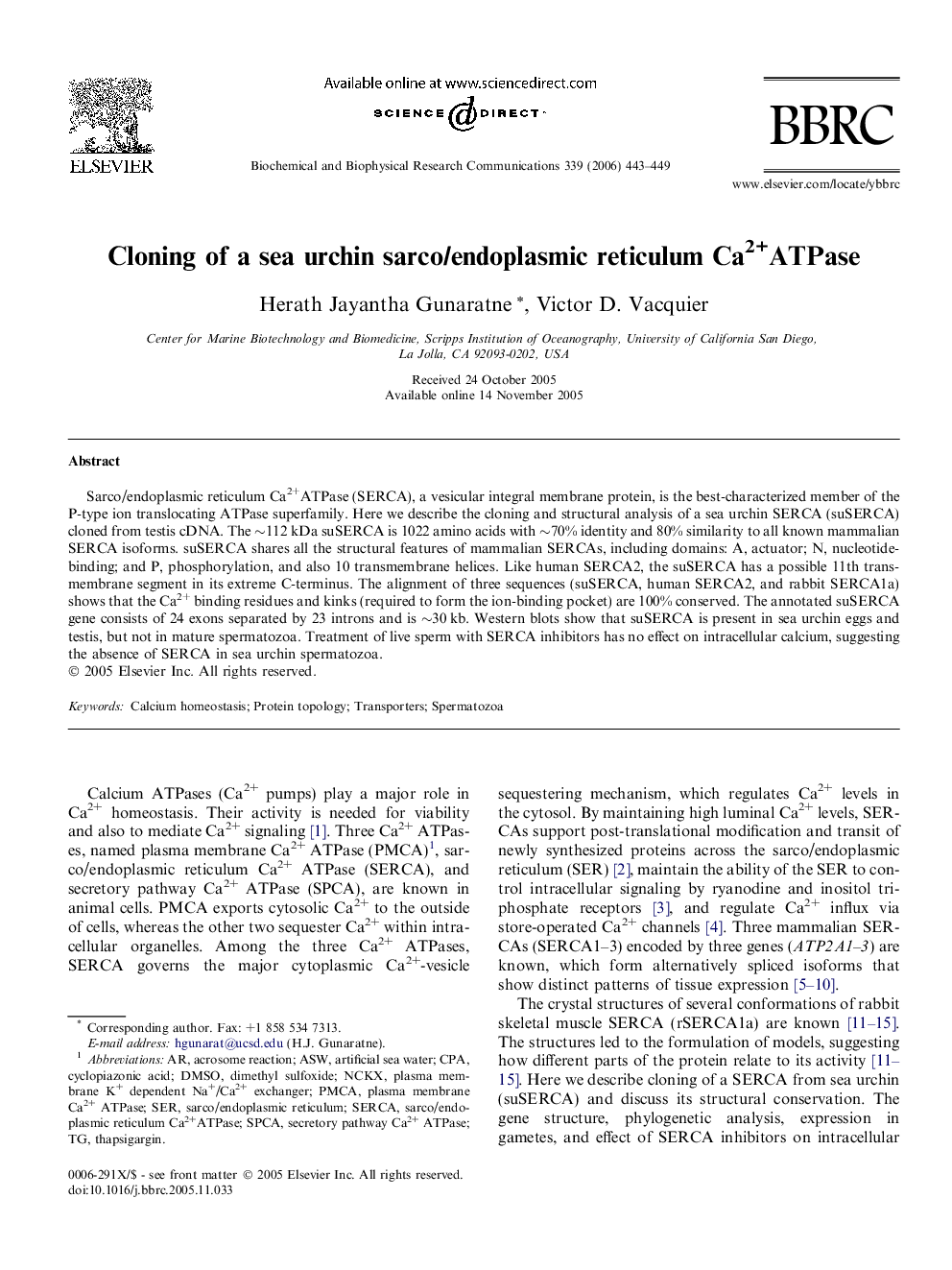| Article ID | Journal | Published Year | Pages | File Type |
|---|---|---|---|---|
| 1940957 | Biochemical and Biophysical Research Communications | 2006 | 7 Pages |
Sarco/endoplasmic reticulum Ca2+ATPase (SERCA), a vesicular integral membrane protein, is the best-characterized member of the P-type ion translocating ATPase superfamily. Here we describe the cloning and structural analysis of a sea urchin SERCA (suSERCA) cloned from testis cDNA. The ∼112 kDa suSERCA is 1022 amino acids with ∼70% identity and 80% similarity to all known mammalian SERCA isoforms. suSERCA shares all the structural features of mammalian SERCAs, including domains: A, actuator; N, nucleotide-binding; and P, phosphorylation, and also 10 transmembrane helices. Like human SERCA2, the suSERCA has a possible 11th transmembrane segment in its extreme C-terminus. The alignment of three sequences (suSERCA, human SERCA2, and rabbit SERCA1a) shows that the Ca2+ binding residues and kinks (required to form the ion-binding pocket) are 100% conserved. The annotated suSERCA gene consists of 24 exons separated by 23 introns and is ∼30 kb. Western blots show that suSERCA is present in sea urchin eggs and testis, but not in mature spermatozoa. Treatment of live sperm with SERCA inhibitors has no effect on intracellular calcium, suggesting the absence of SERCA in sea urchin spermatozoa.
